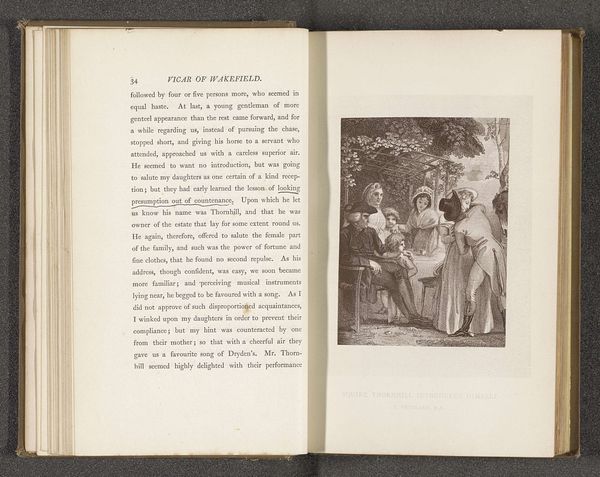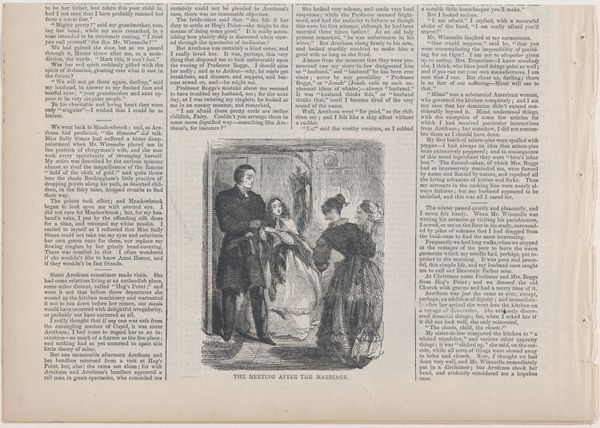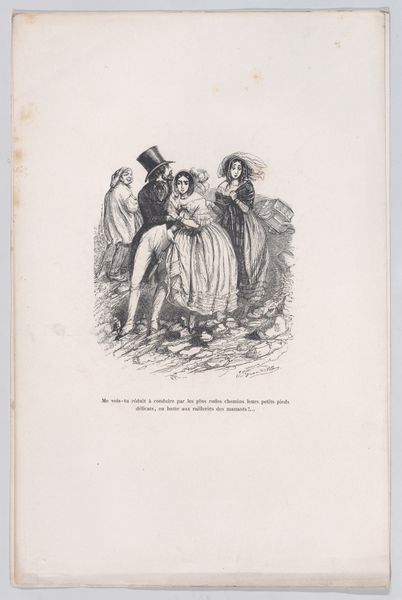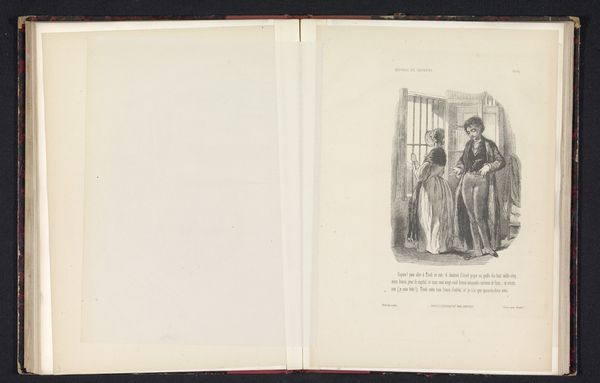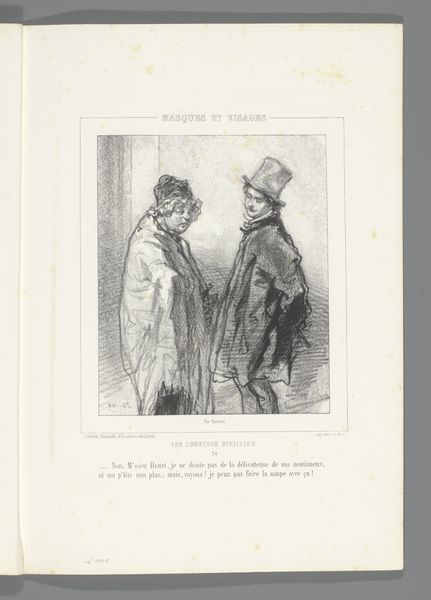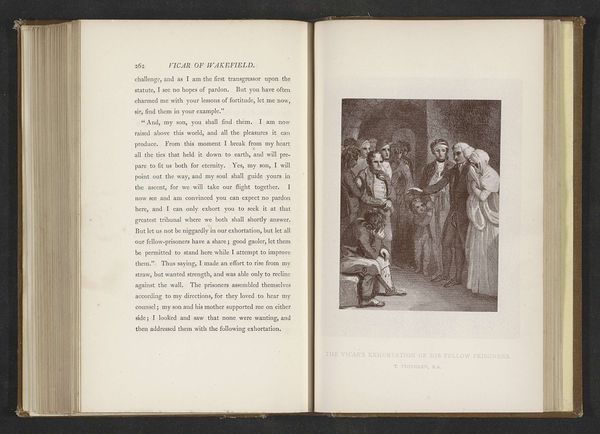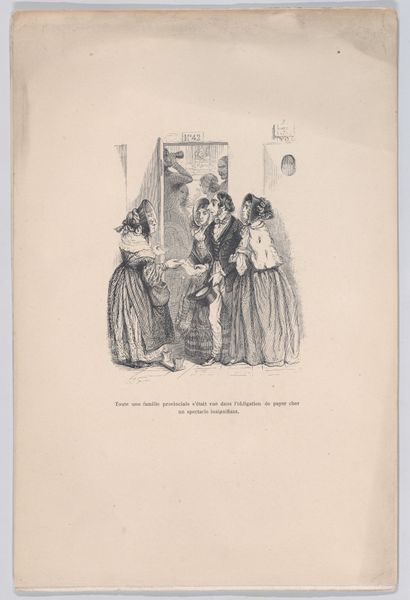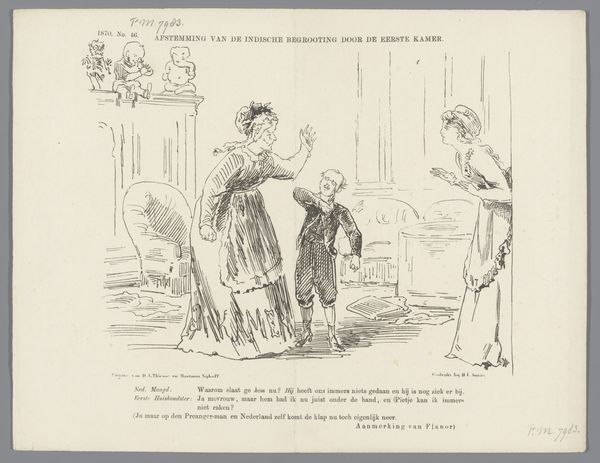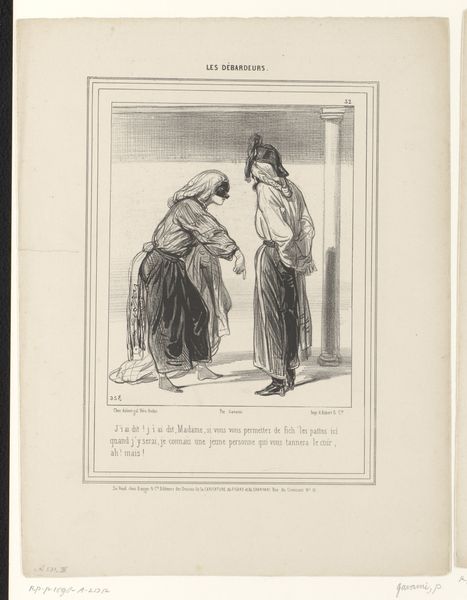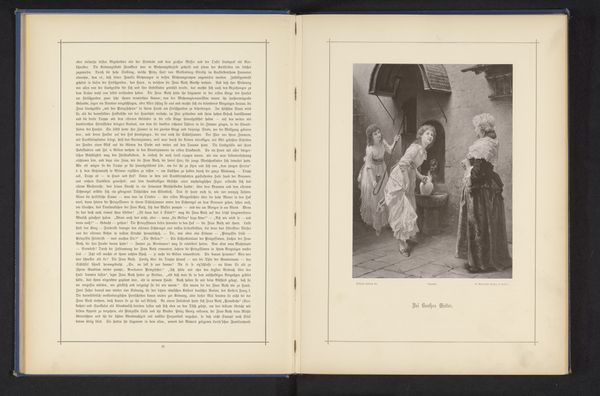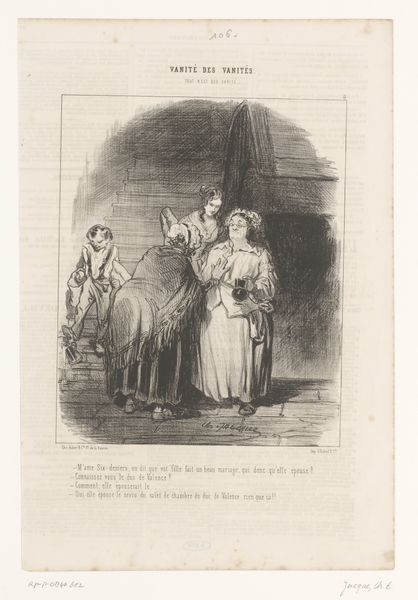
drawing, print, ink, pen
#
drawing
# print
#
ink
#
pen
#
genre-painting
Dimensions: height 180 mm, width 115 mm
Copyright: Rijks Museum: Open Domain
Curator: Let’s take a look at an interesting piece from before 1869, currently housed in the Rijksmuseum: a drawing, print, and work in ink, created with pen, known as "Geld tellende man en een vrouw voor een raam," or "Man counting money and a woman before a window." Editor: It’s stark! The monochrome really lends a sense of solemnity to what could be an otherwise commonplace scene. I notice how confined they both seem within the composition. Curator: Yes, observe the formal elements: the artist emphasizes the man’s figure in the foreground, dominating the composition. Note the use of cross-hatching to create depth, particularly in his attire and the folds of the woman’s dress. Editor: It does make me think about societal pressures and expectations during that time. The woman’s posture, gazing out the window, maybe alludes to a desire for something more, an escape from financial precarity. He looks pretty confident, but the scene itself has me wonder: Where did he get the money? Curator: The placement near a window offers interesting opportunities for symbolism. Light is generally associated with divine wisdom, truth, good versus dark. Perhaps the scene attempts to explore the complexities of daily life during an era of evolving social conventions. The bars on the window create a counterpoint here; a symbol of restriction! Editor: Maybe the choice to present this as a genre painting is meant to reflect not just the individual experience of these two figures, but also to provoke questions about gender and economic imbalances. Curator: Yes, exactly. Its value comes from the masterful control of line, the dynamic juxtaposition of light and dark, and its creation of atmosphere. These allow the picture's symbolism to arise through pictorial construction itself. Editor: Precisely! Through close reading of both subject and symbolism, this image can be looked at to represent power, class, gender—all the tensions that simmered beneath the surface of everyday life in that period. Curator: A final examination reinforces this experience of an artist skillfully exploiting materials and techniques to subtly reinforce an implied deeper reading. Editor: Ultimately, that interplay keeps us thinking about the social narratives that shaped and continue to shape such scenes even today.
Comments
No comments
Be the first to comment and join the conversation on the ultimate creative platform.
